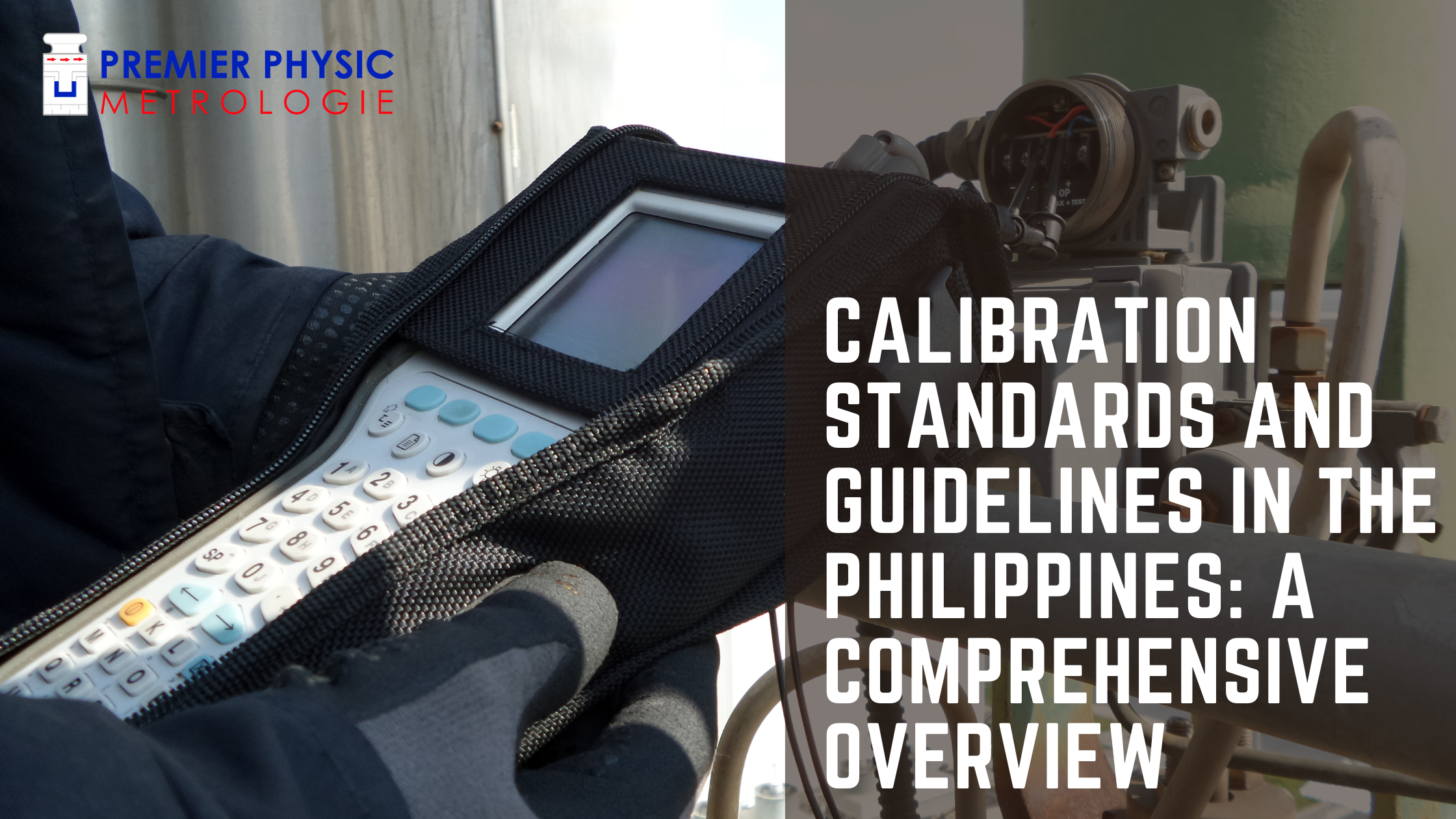Introduction
Calibration is a critical process that ensures accuracy and reliability in measurements, instruments, and equipment. In the Philippines, adhering to the relevant national and international calibration standards is essential for maintaining quality and consistency across various sectors. This article provides an in-depth examination of the calibration standards and guidelines followed in the Philippines, emphasizing their significance and impact on different industries.
Top Calibration Standards and Guidelines in the Philippines
1. Philippine National Standards (PNS)
The Philippine National Standards (PNS) are set by the Bureau of Philippine Standards (BPS), under the Department of Trade and Industry. These standards cover a wide range of industries and are aligned with international best practices. PNS ensures that products and services meet specific requirements, promoting consumer safety and protection.
2. ISO/IEC 17025:2017
ISO/IEC 17025:2017 is an international standard that specifies the general requirements for the competence of testing and calibration laboratories. Accreditation to this standard demonstrates a laboratory’s technical competence and ability to produce precise and accurate results. Many laboratories in the Philippines aim to achieve ISO/IEC 17025 accreditation to gain credibility and recognition at the global level.
3. Department of Science and Technology (DOST) Guidelines
The Department of Science and Technology (DOST) plays a significant role in promoting research, development, and innovation in the Philippines. DOST has established guidelines for calibration practices to ensure uniformity and reliability in scientific measurements and equipment.
4. Food and Drug Administration (FDA) Regulations
The FDA in the Philippines has stringent regulations for calibration, especially in the pharmaceutical and food industries. Calibration of measuring instruments in these sectors is crucial to ensure accurate dosages, formulations, and food safety.
5. International Organization for Standardization (ISO) 9001:2015
While not specific to calibration, ISO 9001:2015 sets standards for quality management systems. Calibration is an essential aspect of maintaining quality and meeting customer requirements, making ISO 9001:2015 compliance highly relevant for calibration labs and industries in the Philippines.
6. Environmental Management Bureau (EMB) Guidelines
The EMB, under the Department of Environment and Natural Resources (DENR), has established guidelines for calibration practices related to environmental monitoring equipment. These guidelines ensure that the data collected for environmental assessments is accurate and reliable.
7. Civil Aviation Authority of the Philippines (CAAP) Regulations
In the aviation industry, precision and accuracy are paramount. The CAAP has specific calibration regulations to ensure the safety and reliability of navigation, communication, and surveillance equipment used in aviation.
8. Philippine Accreditation Bureau (PAB) Requirements
The Philippine Accreditation Bureau (PAB) is responsible for accrediting conformity assessment bodies, including calibration laboratories. Adhering to PAB’s requirements ensures the competence and reliability of calibration services offered in the country.
9. National Metrology Laboratory (NML) Guidelines
The National Metrology Laboratory (NML) in the Philippines plays a crucial role in maintaining national measurement standards. Their guidelines and practices set the foundation for calibration processes across various industries.
10. Good Manufacturing Practice (GMP) Standards
The pharmaceutical and healthcare industries must adhere to Good Manufacturing Practice (GMP) standards. Calibration is an integral part of GMP to ensure accurate drug formulations and medical equipment calibration.
11. Energy Regulatory Commission (ERC) Guidelines
The ERC regulates the energy sector in the Philippines, and calibration of energy meters and measuring devices is essential for fair billing and accurate energy consumption assessments.
12. Occupational Safety and Health Standards (OSHS)
The Department of Labor and Employment (DOLE) enforces the Occupational Safety and Health Standards (OSHS). Calibration of safety equipment is critical to ensuring a safe working environment for employees in various industries.
13. World Health Organization (WHO) Guidelines
In the healthcare sector, adherence to World Health Organization (WHO) guidelines ensures accurate medical equipment calibration, contributing to better patient outcomes and safety.
14. International Electrotechnical Commission (IEC) Standards
The IEC sets global standards for electrical and electronic technologies. Calibration practices aligned with IEC standards help achieve uniformity and interoperability of electronic equipment.
15. Department of Transportation (DOTr) Requirements
In transportation, calibration of measuring instruments and equipment is crucial for safety and compliance with the Department of Transportation (DOTr) requirements.
16. Philippine Council for Industry, Energy, and Emerging Technology Research and Development (PCIEERD) Guidelines
The PCIEERD promotes research and development in various industries. Their guidelines for calibration support the advancement of technology and innovation.
17. Philippine Society for Quality, Inc. (PSQ) Recommendations
The PSQ is a non-profit organization that advocates quality management practices. Calibration is an integral part of their recommendations for ensuring superior product and service quality.
18. International Telecommunication Union (ITU) Standards
In the telecommunication sector, adhering to ITU standards for calibration of network equipment and devices is crucial for seamless communication and connectivity.
19. Philippine Association of Food Technologists (PAFT) Guidelines
PAFT provides guidelines for calibration in the food technology industry, ensuring consistent and safe food production processes.
20. Philippine Nuclear Research Institute (PNRI) Standards
In the field of nuclear research and applications, PNRI has established calibration standards for radiation measuring instruments and devices.
21. Metrology in Food Safety and Quality Control
Metrology plays a vital role in ensuring food safety and quality control. Calibration of food testing instruments guarantees accurate results and compliance with food safety standards.
22. Philippine Society for Testing and Quality, Inc. (PSTQ) Specifications
PSTQ’s specifications for calibration in testing and quality control support reliable and accurate measurement practices.
23. Telecommunications Office (TELOF) Regulations
TELOF sets regulations for telecommunications equipment calibration to ensure seamless communication services.
24. Department of Health (DOH) Standards
The DOH has specific calibration standards for medical devices and equipment used in healthcare facilities to ensure patient safety.
25. International Atomic Energy Agency (IAEA) Guidelines
In the field of nuclear energy, adhering to IAEA guidelines for calibration is crucial for safe and reliable operations.
Top Calibration Standards and Guidelines in the Philippines: A Comprehensive Overview
In this section, we provide a detailed overview of the top calibration standards and guidelines in the Philippines, along with their significance in various industries.
FAQs
FAQ 1: What is the importance of calibration standards in the Philippines?
Calibration standards ensure accuracy, consistency, and reliability in measurements and equipment across different industries, fostering consumer safety and promoting trust in products and services.
FAQ 2: How can ISO/IEC 17025:2017 accreditation benefit calibration laboratories in the Philippines?
ISO/IEC 17025:2017 accreditation enhances the credibility and global recognition of calibration laboratories, demonstrating their technical competence and adherence to international best practices.
FAQ 3: Why are calibration guidelines necessary for the pharmaceutical and food industries?
In the pharmaceutical and food sectors, calibration guidelines are crucial to ensure accurate dosages, formulations, and food safety, safeguarding public health.
FAQ 4: How does calibration impact aviation safety in the Philippines?
Calibration of navigation, communication, and surveillance equipment in aviation is vital for ensuring the safety and reliability of air transportation.
FAQ 5: What role does calibration play in maintaining a safe working environment?
Calibration of safety equipment is essential in various industries to uphold Occupational Safety and Health Standards (OSHS) and protect employees’ well-being.
FAQ 6: How does calibration support research and development in the Philippines?
Calibration guidelines by organizations like PCIEERD and PSTQ promote technological advancement and innovation in different industries.
Conclusion
The calibration standards and guidelines followed in the Philippines are instrumental in maintaining accuracy, consistency, and reliability in measurements and equipment across various sectors. Adhering to national and international calibration standards showcases the country’s commitment to quality and safety in both local and global markets. By following these standards, industries in the Philippines can uphold the highest levels of precision and accuracy, fostering consumer trust and contributing to the nation’s overall development.



